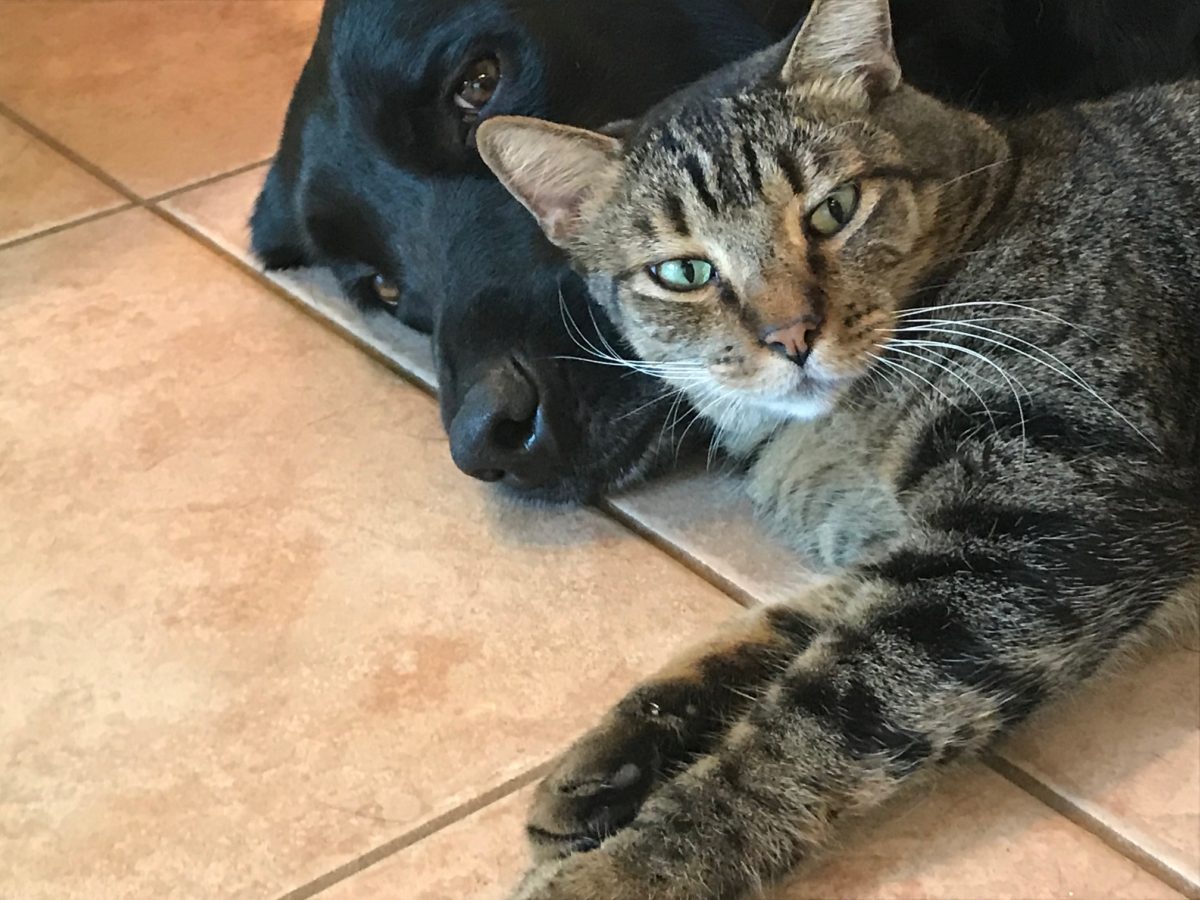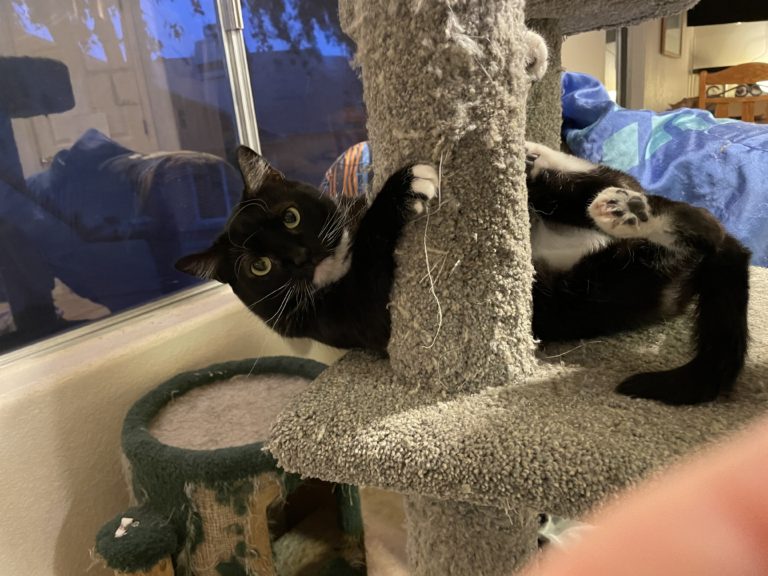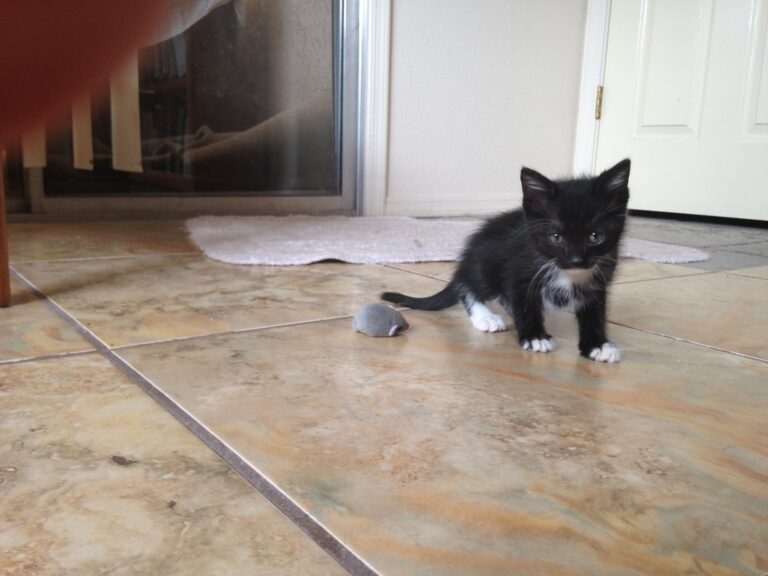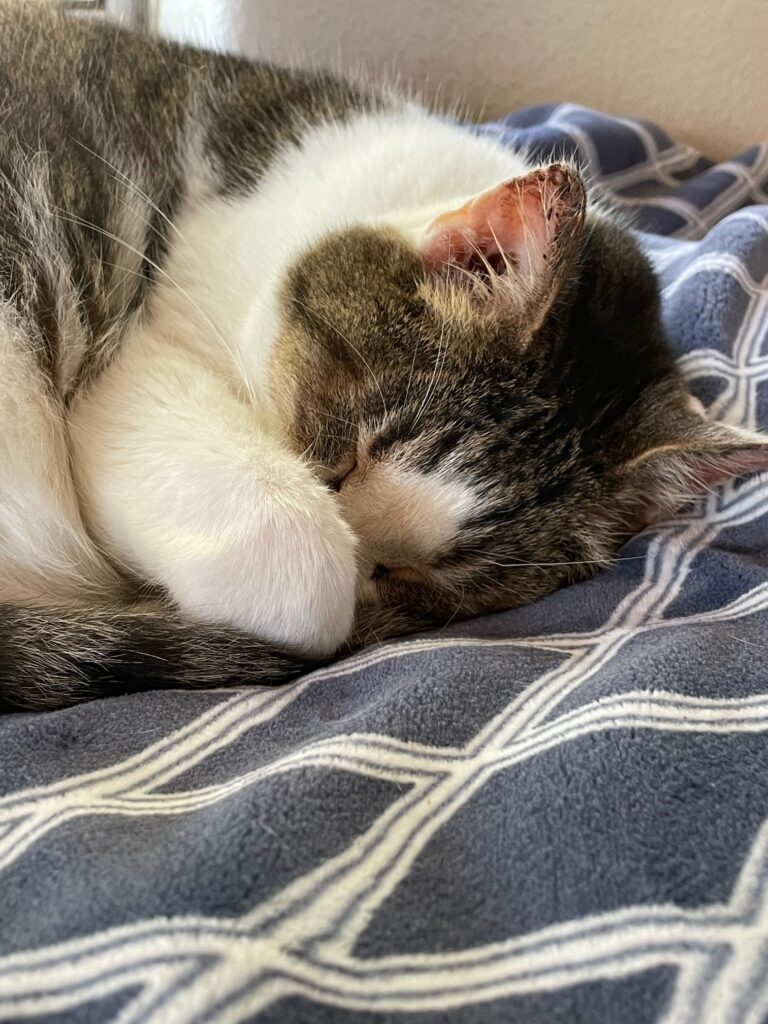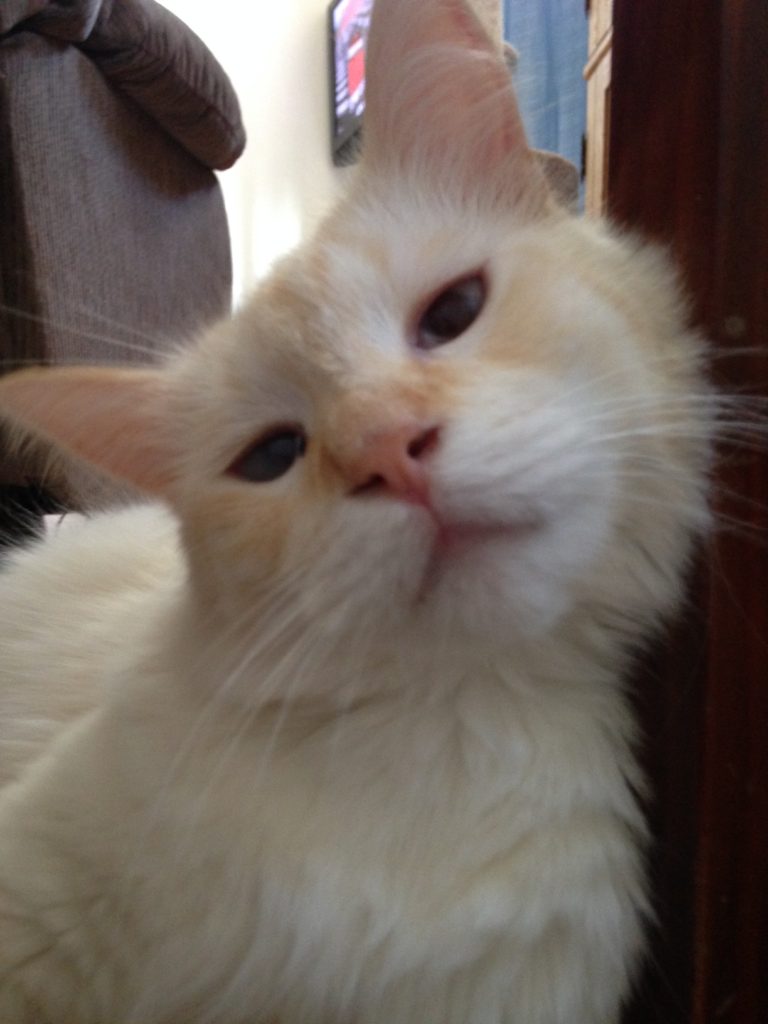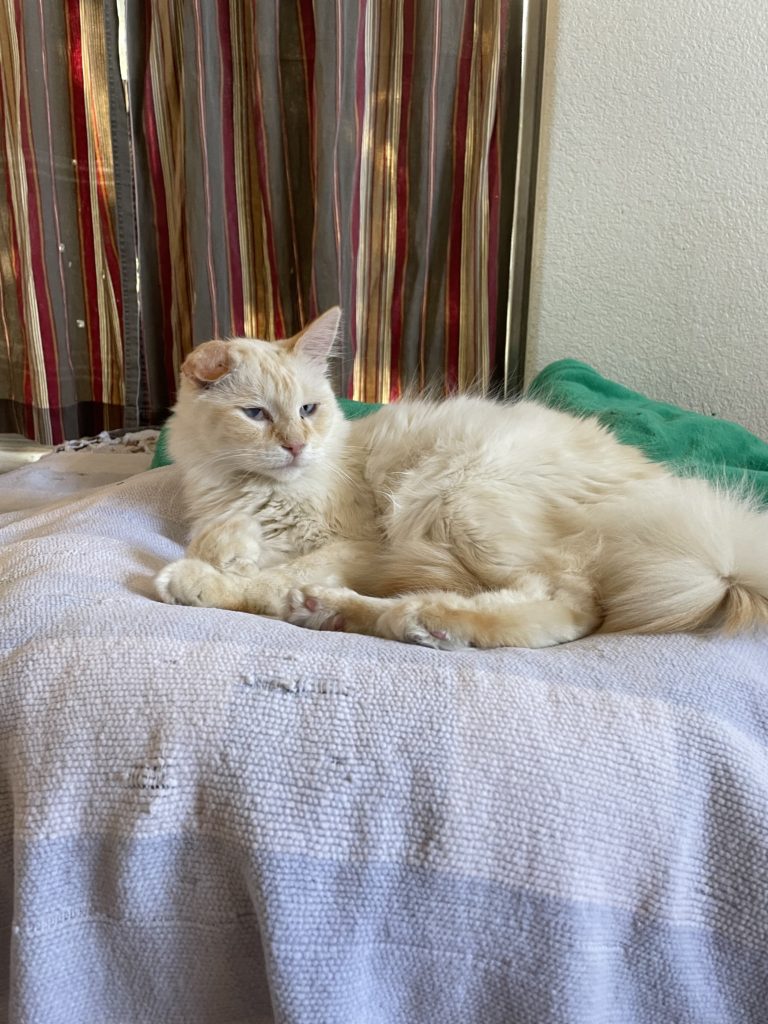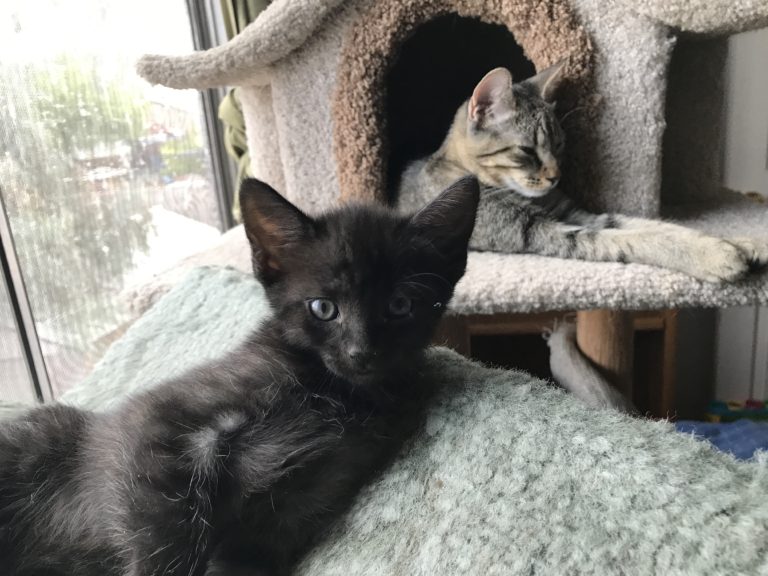Introducing Cats and Dogs
*This post may contain affiliate links for which I earn commissions.*
Cats and Dogs Can Get Along and Often Become Best Buds with a Good Intro Plan
Introducing a cat and a dog can be challenging, but I have hints and tips for you that will make your chance of success much better.
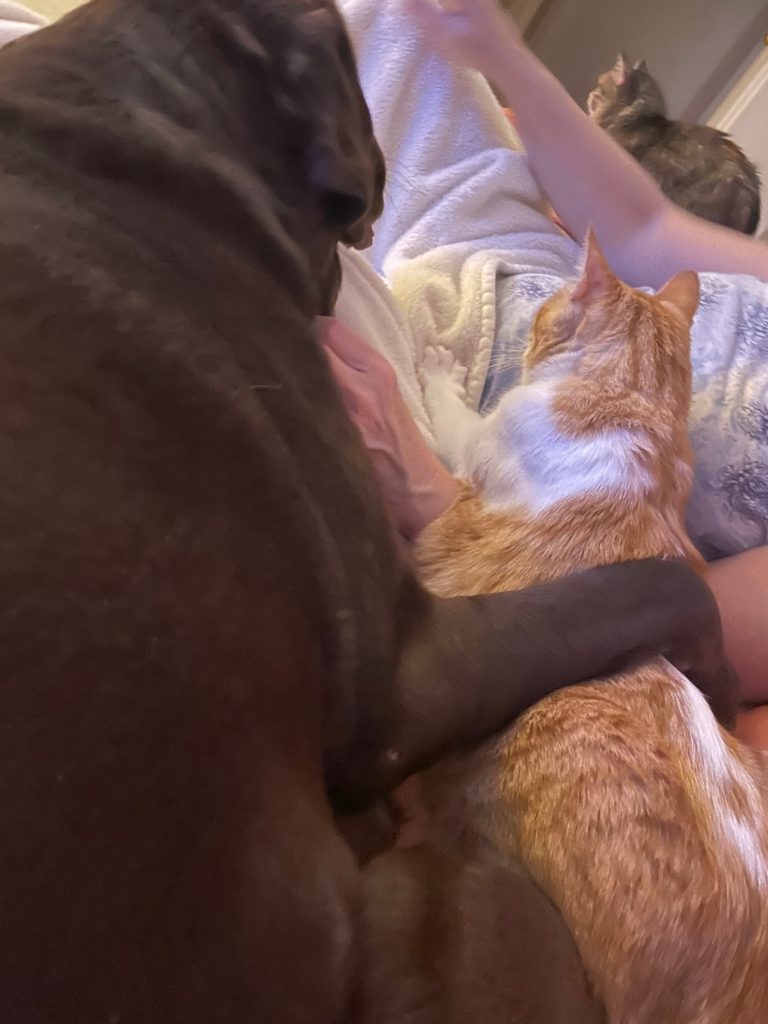
Now not every dog and cat relationship is going to be like Cubby and Mango, but you will see numerous examples of different dogs and cats getting along fine or better right here in this article. Keep in mind all of these cats and dogs are rescues. I have personally met a number of people who are under the misconception that cats and dogs rarely get along. This is incorrect.
If you are introducing a new cat to an existing dog, then this can be the most challenging of all scenarios. We have successfully done this dozens of times so no worries just keep reading. The key here is the preparation BEFORE the first meeting. You need to do a little research and see if your dog is a breed or partial mix breed of a high prey drive dog. This just means they are more likely to chase anything if it runs away from them. It does not mean: they are aggressive, mean, or bad dogs. It also does not mean that you can’t mix this type of dog with cats. The goal here is to be aware of what your dog’s breed tendencies MIGHT be so you can prepare beforehand. If you have a high prey drive breed your introduction journey will need to be slower and probably longer. Also keep in mind that little kittens are defenseless.
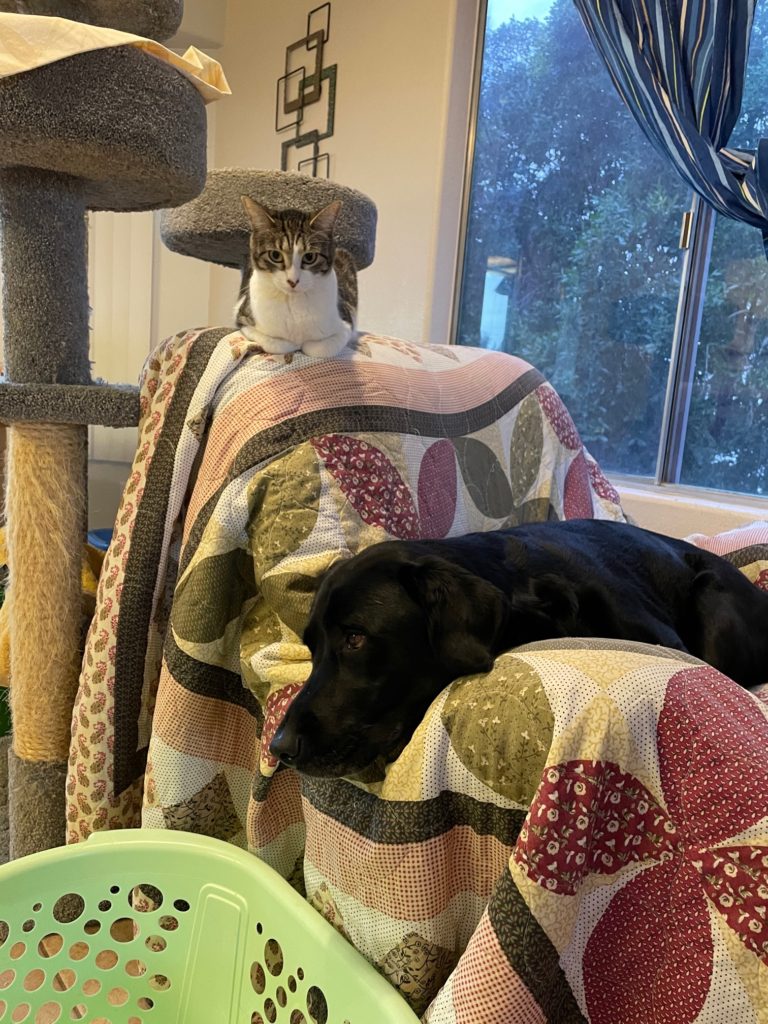
It is absolutely crucial that the cat has already had time to adjust to the new house and at least one human before you try to introduce them to the dog. The worst possible outcome of the first initial introduction is for the dog to be able to chase the cat if the cat runs away. The dog may try this even if you have done all of the pre-intro steps we will be discussing. The only way to guarantee this will not happen is to have the dog on a very short leash with a strong tight grip.

Step one is to make sure the new kitty is feeling pretty comfortable in at least part of the house and is very comfortable with at least one human in the house. Next you want to avoid the “SHOCK” scenario where the cat and dog see each other for the first time from across an open room with no real control in place. The best way to accomplish this is to take baby steps. Have the two of them have some exposure from under a closed door. This gives each of them the all important chance to smell each other. Both cats and dogs are really into scent and if they get a few or several chances to sniff each other before the face to face, then things will probably go much smoother.
Now some dogs have more energy and are more hyper than others. Some dogs are more likely to bark at nearly every new situation where others will not. Your dog needs to be somewhat calm and definitely not be barking during all the steps of the introduction process. You may need to be ready with some treats or whatever you use for training for the dog. It might be as simple as you giving a sit or sit stay command when your dog is acting inappropriately at that moment.
If your dog tends to be more high energy/hyper, then perhaps some exercise for them prior to the cat introduction exercises may help. Take your pup for a walk or play in the yard first, then start the intro exercises right after.
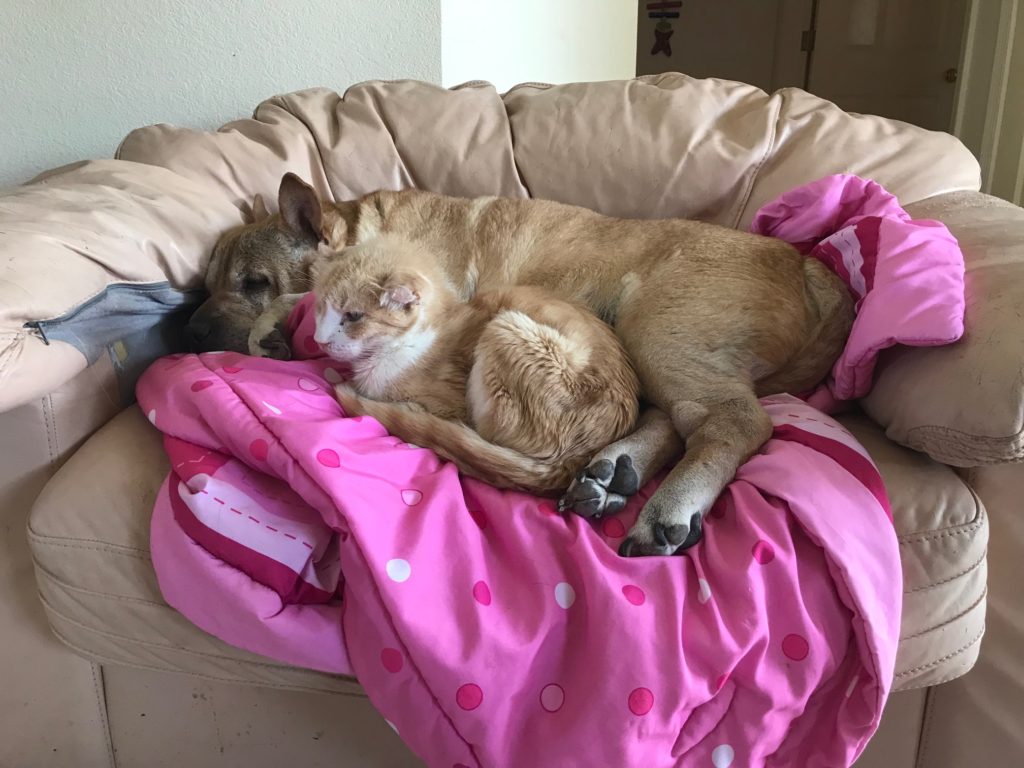
Another trick you can try is to have the dog outside with the cat inside with each facing a glass patio door. You don’t want to try this first right away. The patio door strategy can be helpful after a few sessions of under the door if that goes well. You might even include the patio door combined with feeding time for both. You can do this a few times if it seems to be going well. You would want to have a human on each side of the door to intercede if there are any issues.
If your initial attempts with under the door seem to be a real challenge you might also include giving each pet an old blanket, towel, t-shirt etc. to lay or sleep on. Then the next day switch the towel or blanket and let the other pet sniff their counterpart. This can be a good strategy even if the under the door plan is working fine.
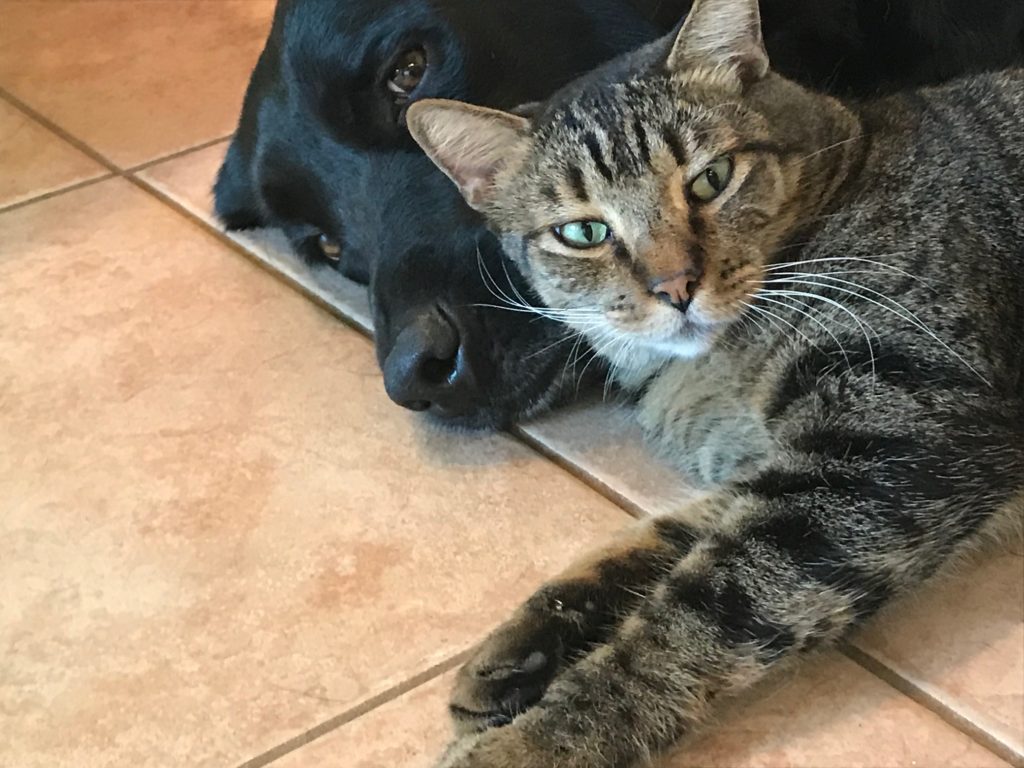
Another strategy you can try is using baby gates to keep the pets separated, but still able to see and sniff each other. I said baby gates not gate. You will probably need at least two possibly three all stacked on top of each other. If you just try one gate the cat will most likely be able to get over it and perhaps even the dog depending on the type, age, and size. If you can stack three gates this is a really good way for a slow introduction type approach.
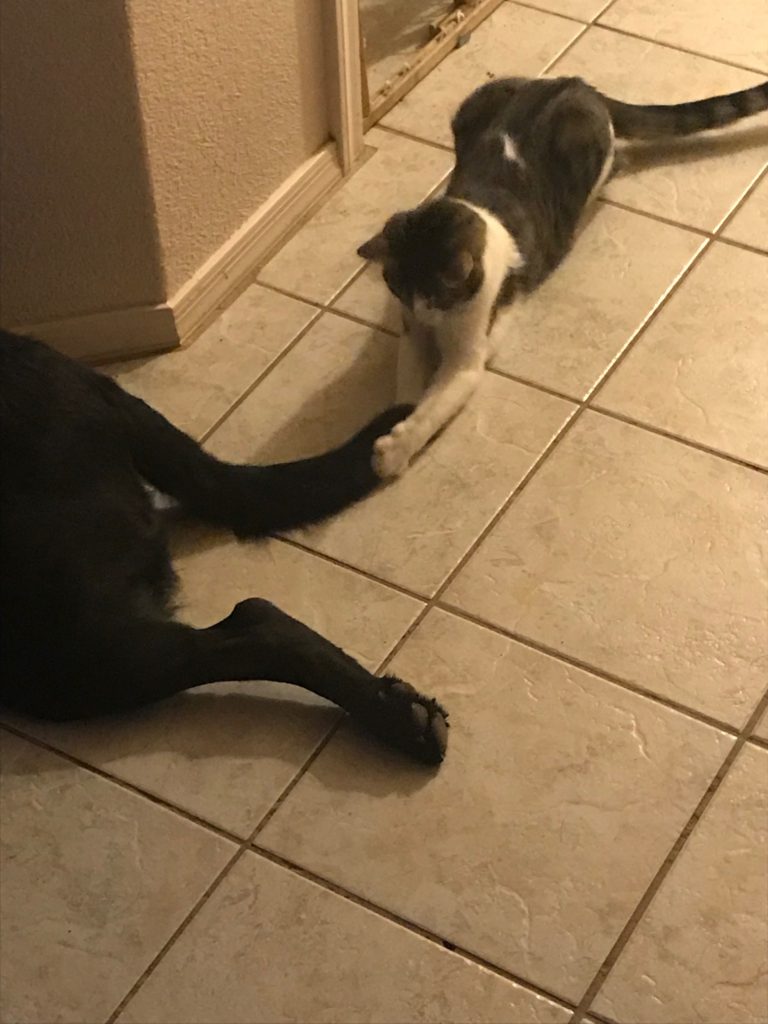
The most important part of the intro process is to be patient. It is far better and faster to go really slow than to try and rush things and then have an issue. If things go poorly, then it will take more time to back track and try again. We have had a few times when we were a little more cautious than was needed, but in the end success was achieved with very little if any real issues arising.
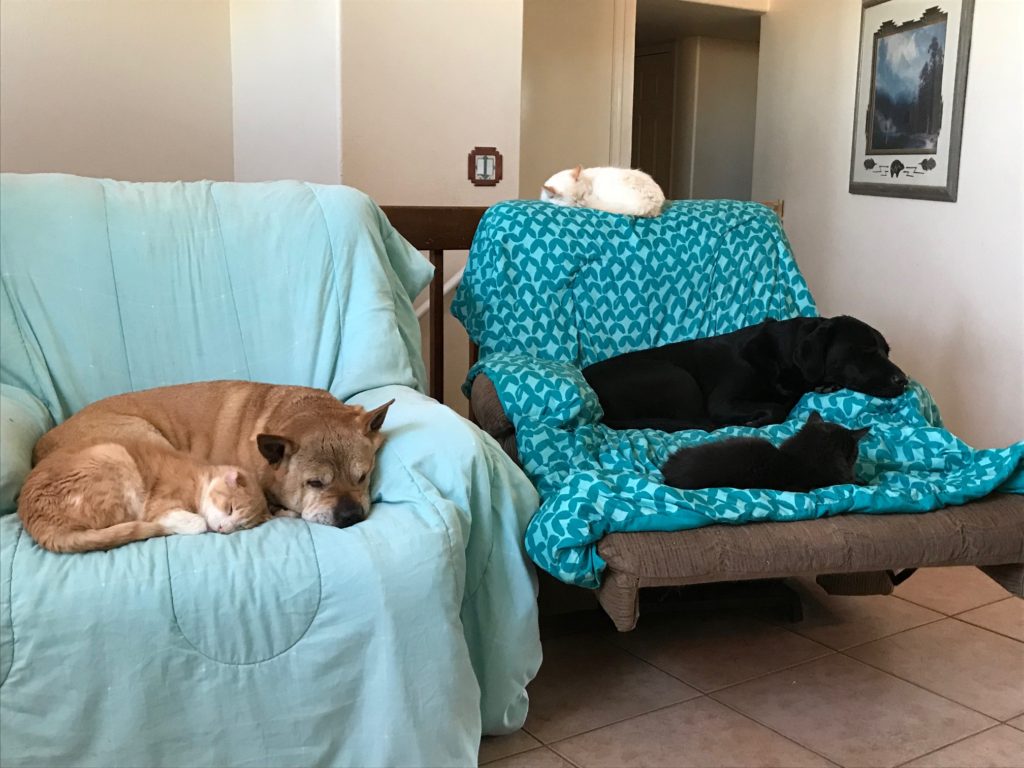
Years ago when we first rescued the group that our cat Dexter was with we had eight dogs and thirteen cats of our own. Three of the dogs were giant breed and several of them would chase after strange cats outside that dared to venture onto our two acre property. After much consideration I decided to keep Dexter which meant I would have to develop a strategy to introduce him to our pets.
My first concern were the dogs. I knew that this group could be the make or break of the entire process. One of the deciding factors to try and keep Dexter was that he so laid back, calm, confident, and smart. I knew he would need all of his talents and charms to pull this off. I only even tried this because he was so awesome and we clicked right away.
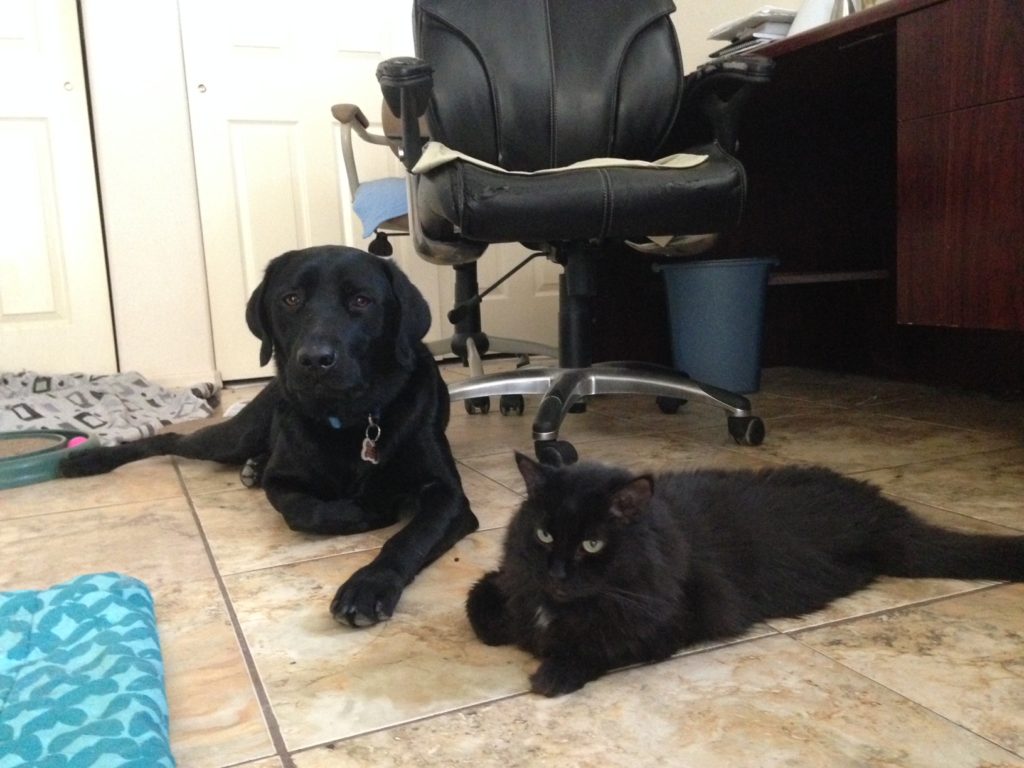
I decided to try a little different strategy with Dexter. I felt that since he was so calm, confident, and trusting of me that he would probably not freak out if I just carried him around the house a bit and let everybody see each other briefly. Initially, Dexter was living in a spare bedroom that we were using as a workout/cat room. We would go in several times a day and just spend time in there.
I started a little at a time by just walking with him in my arms around the house. At first we just stuck with the downstairs basement area where Dexter’s room was. After I was able to confirm he was going to be calm when I did that, even when he saw other pets, then I proceeded to carry him around more and more of the house. I started with just a couple of dogs seeing and smelling from a distance and then gradually added more dogs with closer distances. During this time I went ahead and started the process of introducing him to the other cats in a similar fashion.
I did this for several times per day over two weeks. Each time a little longer and a little closer, but never right in anyone’s face. There were mixed reactions from the dogs and cats with being curious as the most common scenario. Dexter was a champ and just remained calm and trusting. Finally the day came when I felt we was ready. I carried him to the main living area walked him around in my arms a bit and then set him down on the floor. We were prepared to leap into action if needed, but stayed back a bit to see if my plan worked.
The dogs just kind of wandered over two and three at a time to sniff and see Dexter up close. The key was he never moved. He just sat there and waited just like I thought and hoped he would. After about five minutes which felt like forever, the dogs just walked away and went about their business no big deal! So I worked hard and long for two weeks and then only needed five minutes more to handle a VERY complicated introduction. It was my planning and prepping ahead of time that made this work.
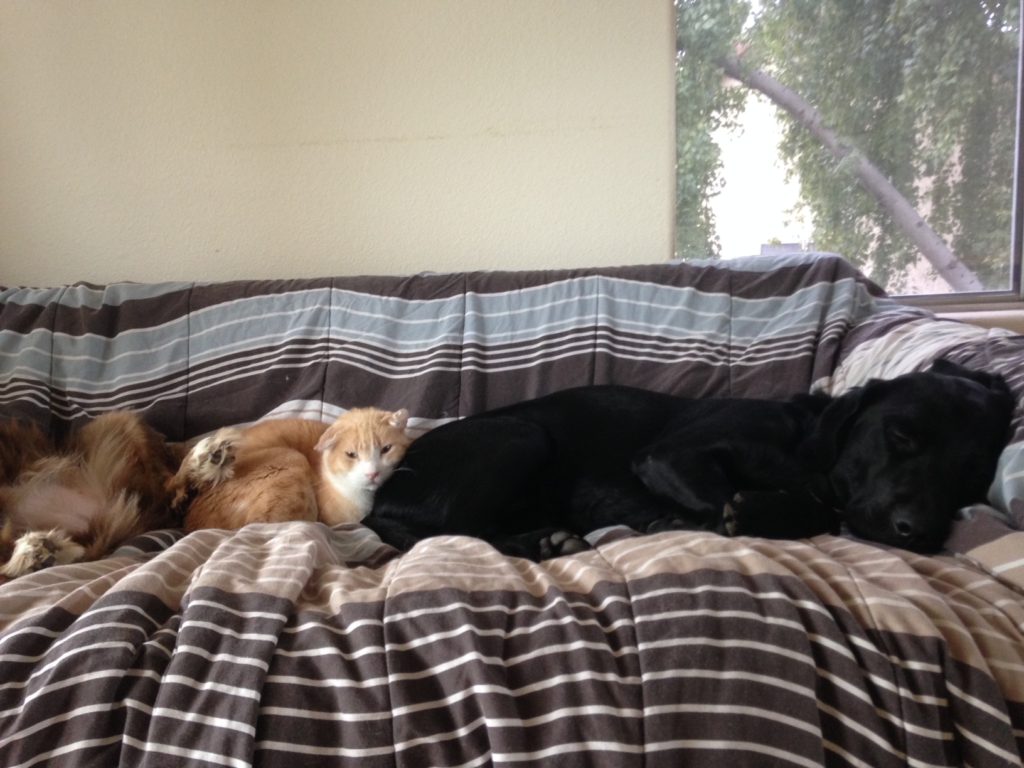
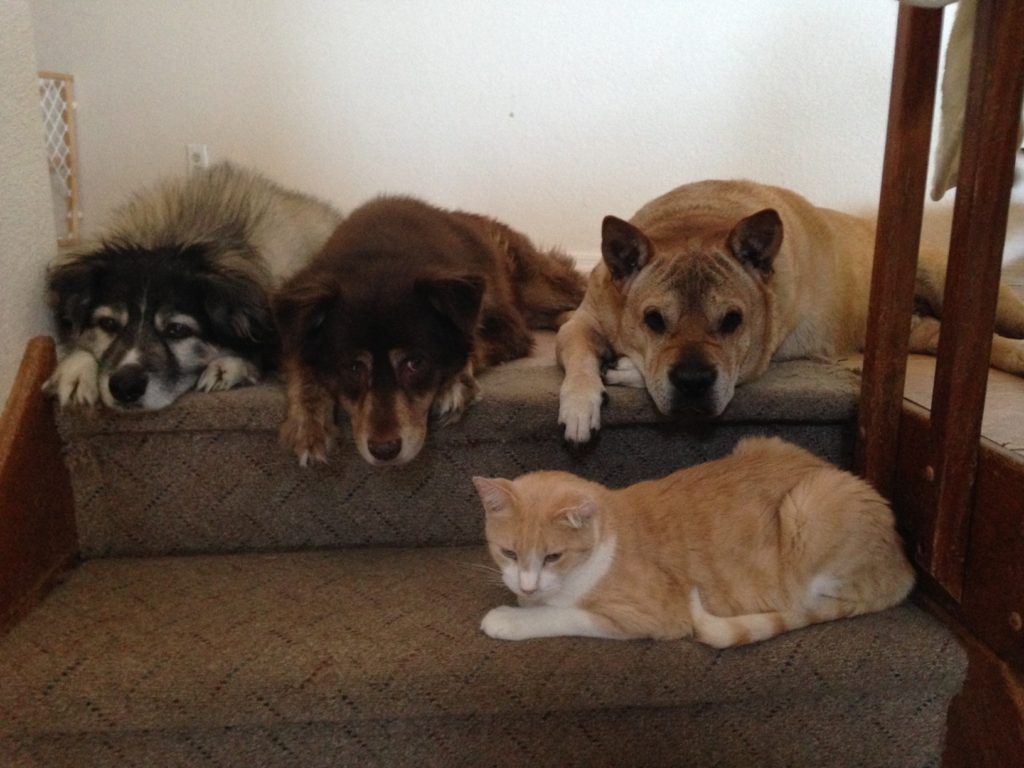
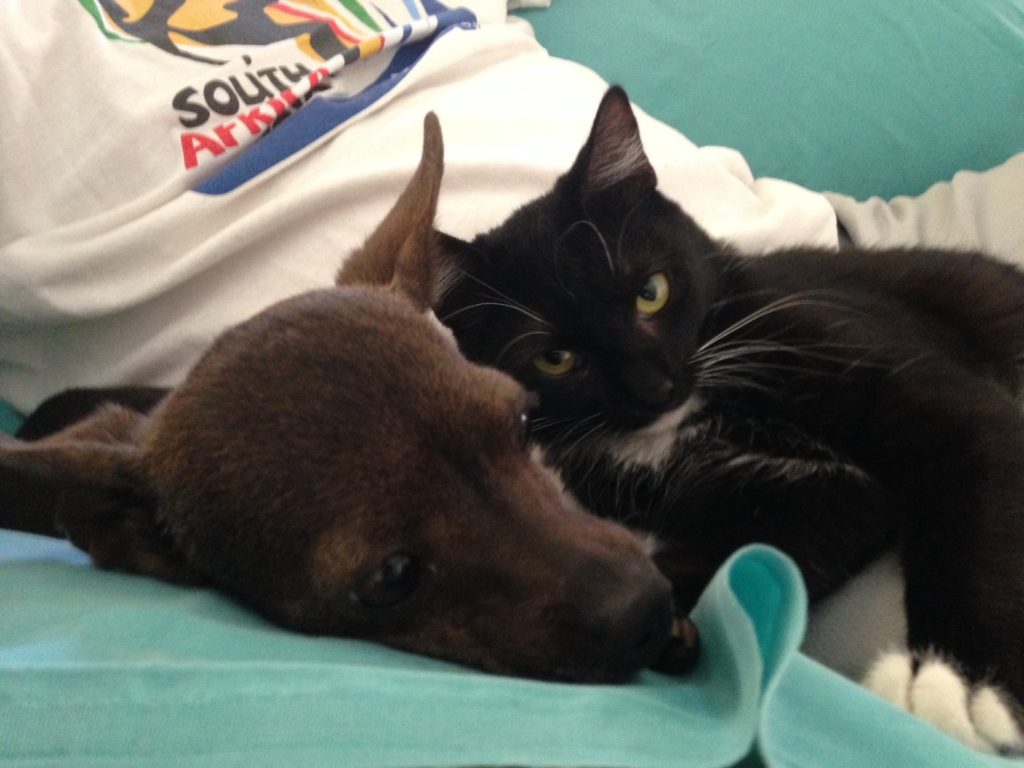
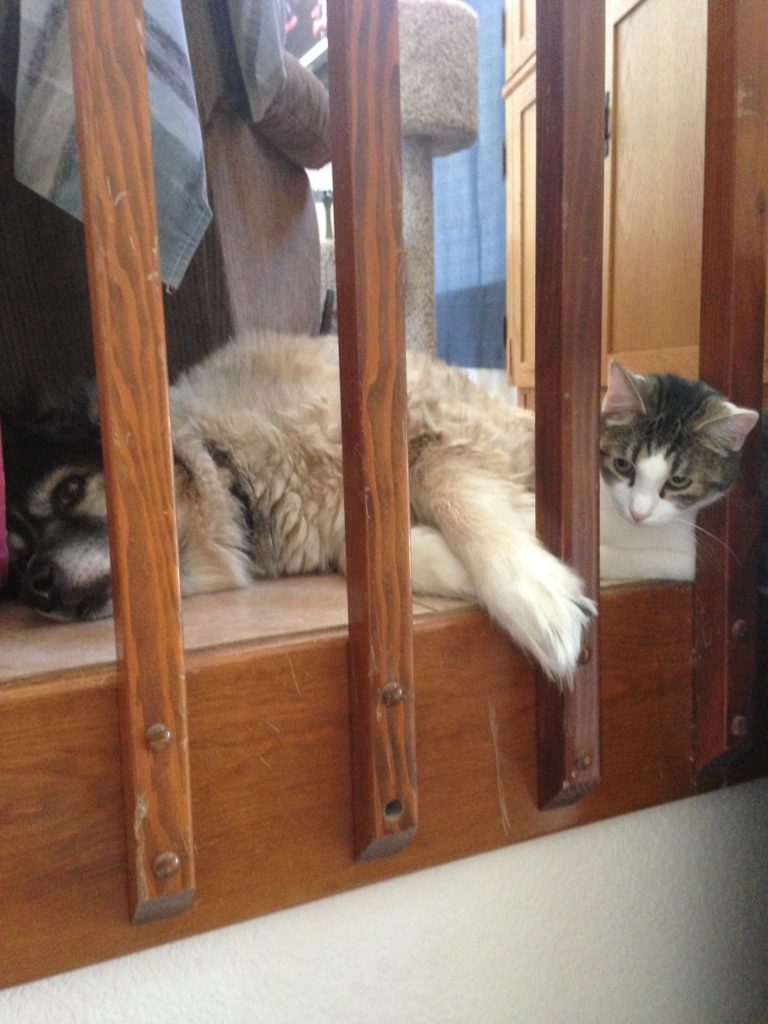
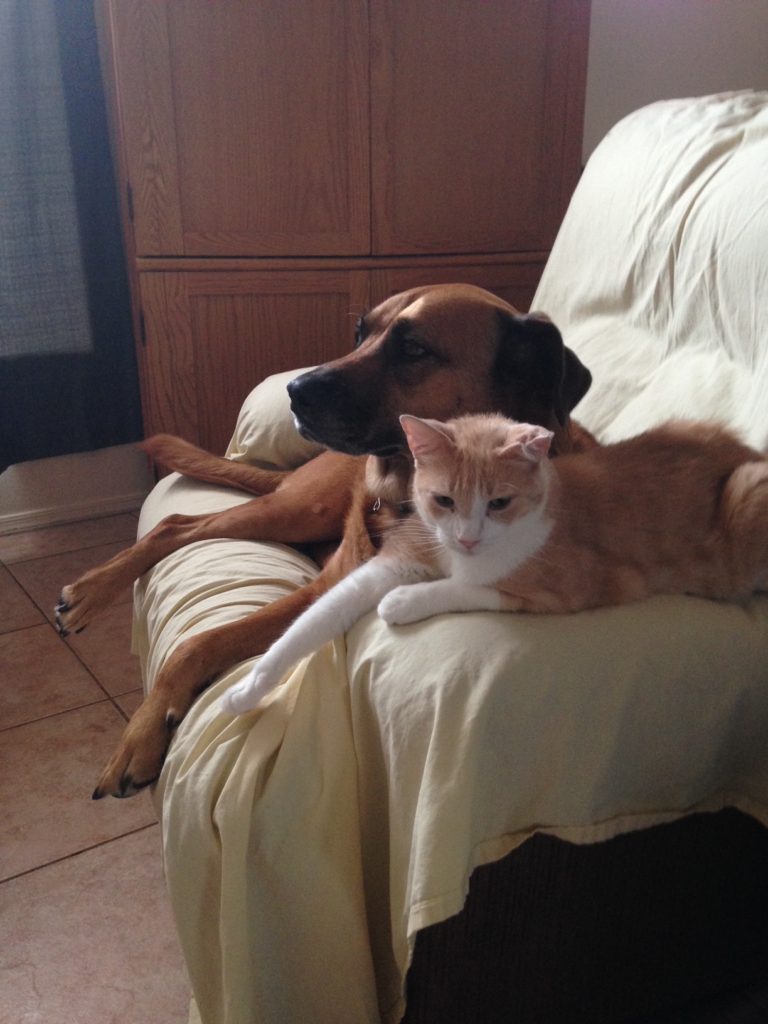
BTW Jack was considered so “unpredictable” that he was not allowed around children or cats. He just needed some love, some training, and some patience. Ultimately, Jack was totally fine with all of our cats, other dogs, and our toddler grandson.
The keys to introductions is slow, patient, careful. You can always pick up the pace later if things go well. It can take much longer and be more complicated if you go too fast and things go wrong. It’s still doable, but just longer and harder. Also keep in mind that when a cat and dog do have issues that BOTH of them could be injured. Cats are very good at striking out and scratching a dog in the nose, face or eyes. Sometimes a little scratch on the nose can remind Rover not to get out of line with his cat family member, but we don’t want things ever to get out of hand.
I hope you found this helpful and I appreciate all of you who are bringing in a new pet to your home. Thank you!

